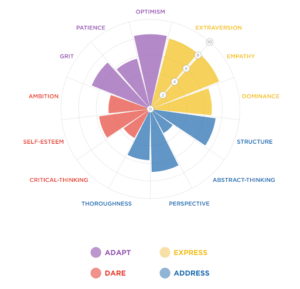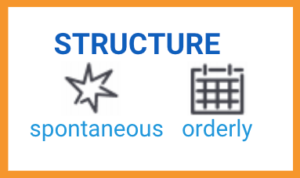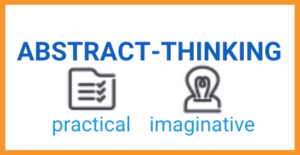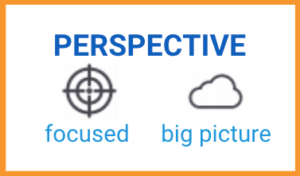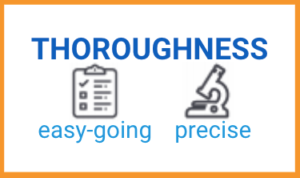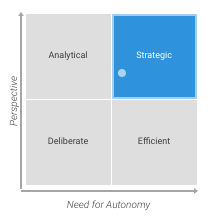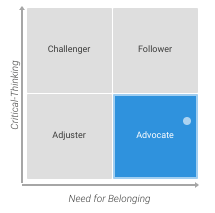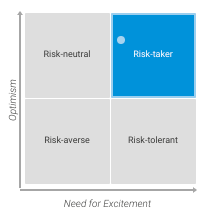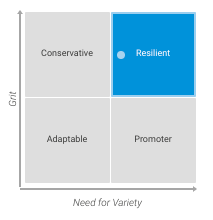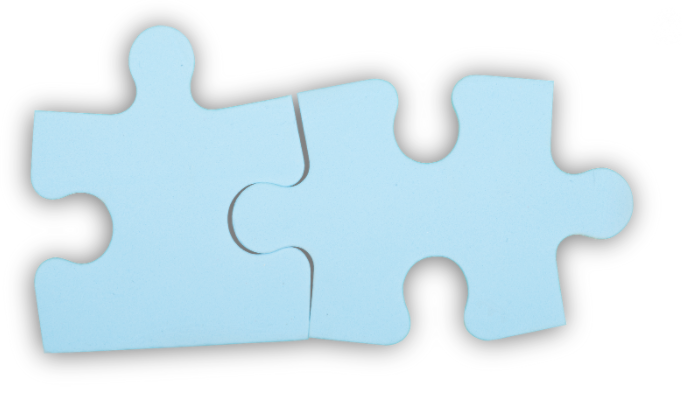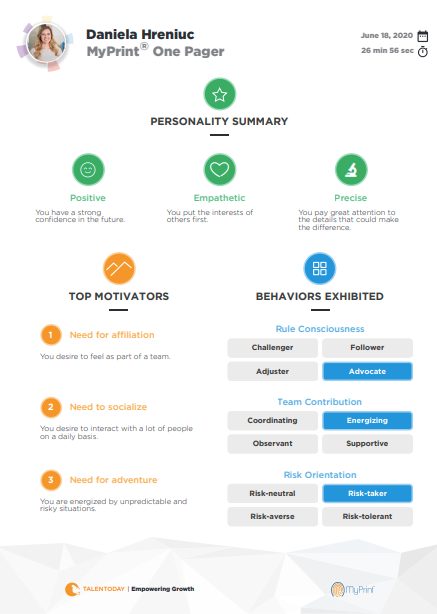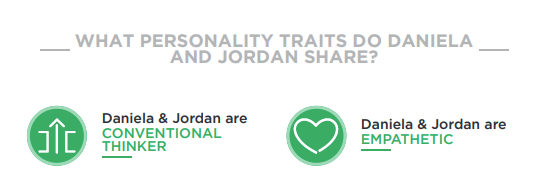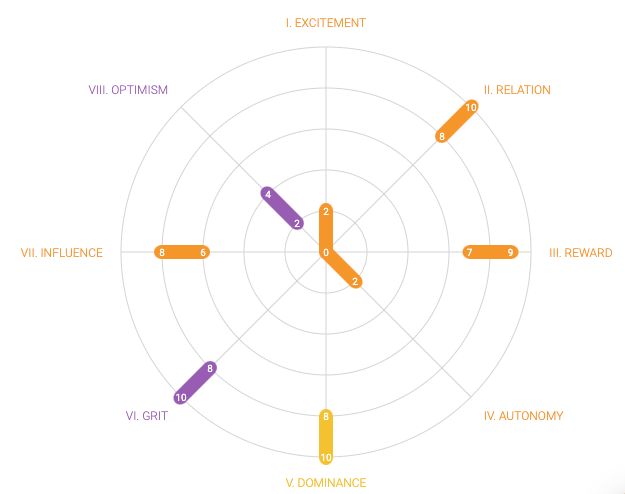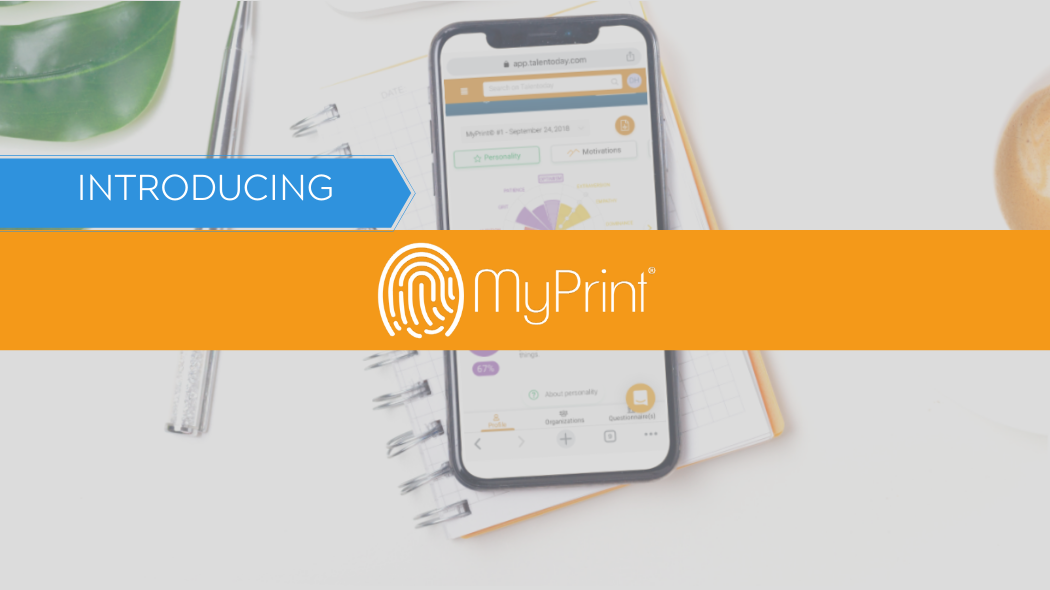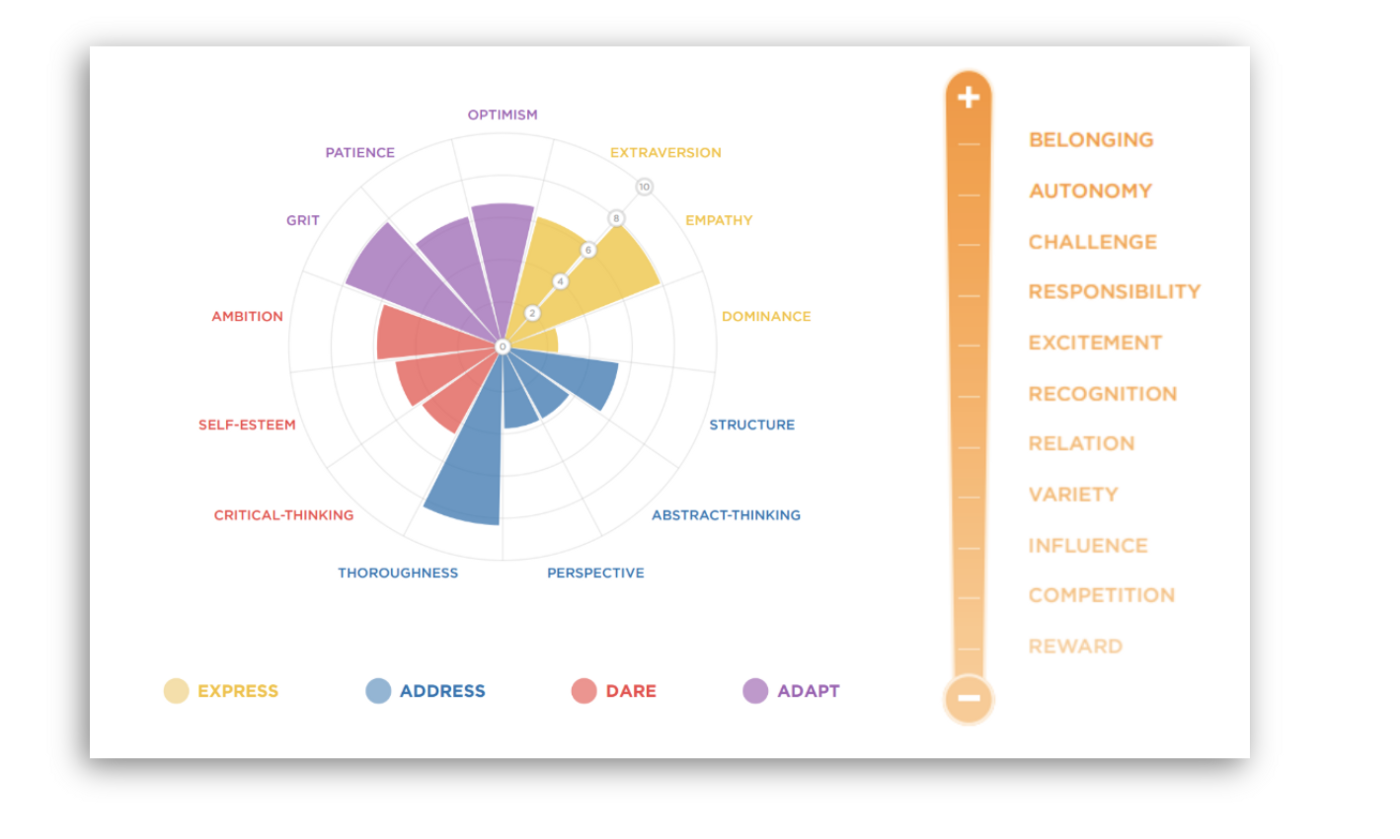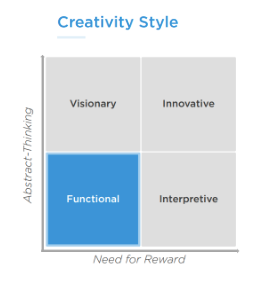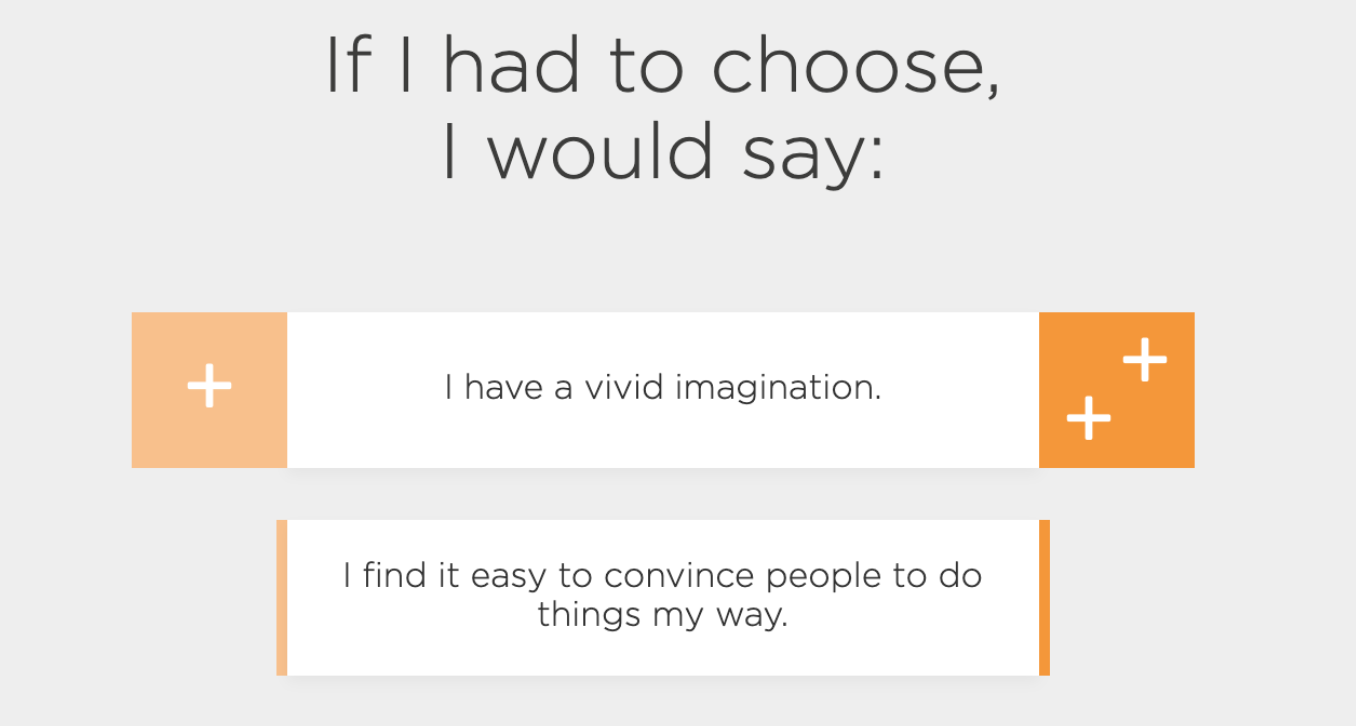Unpacking Your Personality: How Do You Address Tasks and Projects?
Even if you think that you know a lot about yourself and your personality, it is always good to be open to an unbiased opinion about how you respond to the world around you. This can include how you interact with others in class or during meetings, the way you handle pressure of deadlines or tests, and how you organize projects. Taking a personality or soft skills assessment, like MyPrint, can help to uncover strengths you were unaware of or reinforce what you already knew.
What are your strengths and how do you use them on a daily basis? Are there any skills that you are missing or want to improve upon? These are just a couple of the questions that you can ask yourself to get the most out of your soft skills assessment results.
Understand how you approach tasks and projects.
Personality and soft skill assessments help us understand ourselves better by using basic psychological models, such as the Big Five Model of personality. At Talentoday, we have organized our personality dimensions into four groups, called the personality axes, to show how understanding your different traits will empower you to navigate your day-to-day life using science and technology. The four personality axes in MyPrint help us understand how we interact with other people (“Express” - yellow), our tasks and projects (“Address” - blue), ourselves (“Dare” - red), and our environment (“Adapt” - purple).
The Address section of the personality axes is helpful for understanding the way someone approaches issues and undertakes their tasks or projects. This can be beneficial when starting a fresh school year or new job, or if you’re just generally interested in making meaningful improvements in your day-to-day responsibilities.
The four personality dimensions that make up the Address axis are: Structure, Abstract-Thinking, Perspective, and Thoroughness. Being on the high or low end of each of these dimensions does not make you better or worse at planning or conducting your tasks; rather, it helps you to understand your strength in each of those areas so that you can lean into the things you are good at, while pinpointing the areas in which you may want to improve. Remember, you can always leverage an assessment to help understand your personality with an unbiased, scientific approach.
Structure
The two ends of the structure dimension are Spontaneous and Orderly.
If you are a spontaneous person, then you are naturally intuitive. You like to stay flexible in your schedule by avoiding planning things too far in advance, and you often leave a lot of room for improvisation in your working methods. If you are finding that you need a little bit more structure when organizing your week, start by writing down your most important objectives, and do your best to accomplish those even if other things come your way.
On the other end of the structure dimension are the orderly people. If you are orderly, then you are very organized and show no tolerance of ambiguity in your work. You always plan your tasks and projects well in advance and rarely deviate from your schedule. Although this may seem like it is the best way to organize and plan, there are certain times when flexibility is beneficial. When creating your to-do list, determine what is an absolute priority and what you can be flexible with; stay open to opportunities that may come your way.
Abstract-Thinking
The two ends of the abstract-thinking dimension are Practical and Imaginative.
If you are a practical person, you are realistic and don’t like to waste too much time wondering why things are the way they are. You rely on concrete examples to solve issues. If you find yourself stuck when working on an assignment, try to tap into your imagination a little bit. Think of some out-of-the-box ideas for your projects that you might not normally entertain.
On the other end of the abstract-thinking dimension are the imaginative people. If you are imaginative, you often conceptualize problems and try different approaches in order to solve them in the most relevant, but not always the most realistic way. Imaginative people are very creative, but if you find yourself unable to solve an issue, try to only look at what resources and solutions that you actually have available.
Perspective
The two ends of the perspective dimension are Focused and Big Picture.
If you are a focused person, then you are action-oriented. You probably prefer to concentrate on achieving short-term results, rather than spending time to anticipate their future implications. While it is beneficial to focus on those immediate outcomes, there is also a lot to be learned when looking at the long-term impacts of what you are doing. When learning something new or working on a project, think about the relevance and meaning it will have a few years into the future.
The other end of the perspective scale is where the big picture thinkers are. If you are big pictured, you are naturally thoughtful in your work. You will anticipate the long-term consequences of what you are doing as much as possible to have a clear vision of the final outcomes. At times it can be exhausting to think about the future when there is so much uncertainty. If you find yourself being overwhelmed by this, try to focus on the pieces of a project that you can immediately impact regardless of their long-term implications.
Thoroughness
The two ends of the thoroughness dimension are Easy-Going and Precise.
If you are an easy-going person, you are typically tolerant of imperfections. You prefer to value your productivity at work by focusing on the bottom-line, rather than dwelling on every little detail. Having a quantity-centered approach to your work can be beneficial at times, but it is always good to be cognizant of which projects might require a little more attention to detail. When these types of projects come up, schedule some extra review time into the end of your day!
On the other end of the thoroughness dimension we have the precise folks. If you are a precise person, you are naturally diligent. You set high-quality standards for your work and spend time to refine it. However, sometimes it is hard to turn off the ‘perfectionist’ switch. Determine which areas of your work need the extra attention to details, and try to only spend the necessary time on the rest.
Putting it all into action.
Now that you know a little more about the personality traits used to understand how you take on tasks and projects, as part of MyPrint’s Address dimension, it is time for you to take action. If you haven’t taken a MyPrint just yet, you can take it for free in just 25 minutes! There are many other helpful insights besides the ones we discussed here, such as what motivates you, or getting a better understanding of your professional behaviors. Take a look at which soft skill strengths you have and what motivates you, and use that information to help you improve as you take on your next project!
Are Your Personality Traits Right for Your Career Path?
Long gone are the days of separating “life” and “work” into two separate buckets hoping to achieve some sort of balance. Employers and employees alike are now becoming increasingly aware that the personality traits that make each of us unique at home are the same things that can make us successful in the workplace. This shift has been highlighted as the effects of the COVID-19 pandemic further blur the line between professional and personal.
Now, instead of simply checking boxes of required technical abilities and education, job seekers are having to ask themselves deeper questions about their personalities. These questions can include:
“Am I more reserved around new people or do I feel at ease when I’m in the spotlight?”
“Am I comfortable when things are not organized or do I prefer instructions in unfamiliar situations?”
“Do I simply focus on getting a task done or do I take time to focus deeply on the details?”
This amount of self reflection can be overwhelming when there’s a ticking clock for finding work! How can job seekers better understand themselves in order to prepare for the new world of job searching? Thankfully, there is more information than ever to identify which personality traits are more likely to lead to success in a given career path.
Identifying Your Personality Traits
Most job seekers are familiar with the standard questions they’ll likely face in a job interview, such as, “What are your strengths/weaknesses?” However, it’s all too easy to fall into the trap of telling meandering stories that are heavy on details but light on proven takeaways.
What hiring managers are really looking for in job interview responses are what are known as, “transferable skills.” These are the types of skills that are not specific to a single industry or role. Rather, transferable skills — such as personality traits — can be used in a variety of settings.
In order to go deeper when identifying your transferable skills, consider taking an assessment backed by science, such as MyPrint®! Supporting anecdotal evidence from your experiences with tools built on data-driven people analytics can add credibility to your claims. Furthermore, the MyPrint assessment evaluates individuals on 13 distinct dimensions of personality, and gives information on 26 total personality traits. Pinpointing your personality traits can help narrow your job search to roles that are more likely to be the right fit for your career.
Popular Fields and Noteworthy Personality Traits
Once you have a better understanding of the personality traits that make you unique, it’s time to connect them to jobs that will allow them to shine! Based on our Talentoday user database, here are the key personality traits that align with 14 of the most in-demand career paths today:
- Administrative: Compliant, Structured, Conventional Thinker, Practical
- Art Design: Imaginative, Spontaneous, Critical-Thinker, Precise
- Education: Empathetic, Modest, Extroverted
- Engineering: Precise, Confident, Determined, Positive, Individualistic
- Finance/Bank/Accounting/Audit: Confident, Positive, Relaxed, Determined, Individualistic
- HR/Purchasing: Positive, Extroverted, Confident, Striving
- Health and Social Care Provider: Empathetic, Extroverted, Imaginative, Big Picture, Striving
- Information Technology: Confident, Relaxed, Positive, Striving
- Legal: Determined, Relaxed, Big Picture, Compliant
- PR/Writing/Editing: Empathetic, Imaginative, Extroverted, Spontaneous
- Production: Positive, Practical, Confident, Extroverted, Striving
- Research Science: Critical-Thinker, Imaginative, Assertive, Big Picture
- Sales: Extroverted, Practical, Positive, Determined, Striving, Patient, Confident
- Security: Confident, Positive, Relaxed, Striving, Assertive, Determined, Practical
Do any of these personality trait groupings sound like you? If they do but you’re currently on another path, it might be the right time to consider a change! With the transferable skills needed for a successful foundation, all that’s left is to fill in the hard skills gaps you may be missing. If you’re currently working in any of the fields above and are lacking some of the soft skills that are prominent in your position, that’s okay too! This is the perfect time to start developing your strengths in the areas critical to your industry.
Are you interested in learning more about the personality traits that make you…you? Click here to take MyPrint and receive a detailed assessment of your unique personality, motivational and behavioral traits! Then, you’ll be able to use that information to connect your unique strengths to today’s most in-demand jobs.
Behaviors Uncovered: Decision Making, Rule Consciousness, Risk Orientation and Change Reaction
So far, our Behaviors Uncovered series has explored seven total areas of observable actions made by individuals in conjunction with their work environment. Part one focused on Leadership Style, Communication Style, Conflict Management and Team Contribution. In part two, we highlighted Creativity, Work and Learning Styles; these are the behavior patterns that shape the ways individuals expand their knowledge base and work together to invent in the workplace. In this third and final entry in our series, the ways in which individuals relate to organizational structure and make choices take center stage. It’s time to uncover the science behind Decision Making, Rule Consciousness, Risk Orientation and Change Reaction.
As with the first two entries in this series, key information in the following descriptions is drawn from the Talentoday MyPrint® questionnaire. The behavioral dimensions found within the assessment are displayed as score matrices resulting from the combination of personality and motivational results. In short, our behavioral styles are predicted based on the scores (high or low) that an individual has obtained on these two dimensions crossed together. Think of these analytical grids as a way to gain a deeper understanding of why an individual prefers and maintains a particular pattern of actions.
Decision Making
When you start adding up the total number of decisions we make in the workplace on a daily basis, the results can be truly staggering. From soft balls like, “Hot coffee or iced coffee?” to everyday preferences like, “Does this request warrant a meeting or will an email suffice?” employees are constantly faced with choices to make. Eventually, some of these decisions can have a major impact on an organization. Having an idea of how an individual might go about this process can be key when building the right team for your goals.
Decision Making can be described as the set of processes, either intuitive or reasoned, by which an individual ends up choosing between two or more courses of action.
There are four ways individuals can approach decision making, derived from the “Perspective” dimension of personality and the “Need for Autonomy” dimension of motivation:
- Analytical (Big Picture, Need for Support): Individuals who are Analytical decision makers tend to consider multiple points of view in order to frame a situation very broadly.
- Strategic (Big Picture, Need for Self-Reliance): Individuals who are Strategic decision makers rely on their own assessment of a great deal of information to build solutions that stand the test of time.
- Deliberate (Focused, Need for Support): Individuals who are Deliberate decision makers consider just enough input from others to make a plan, but are ready to quickly adapt to the situation if need be
- Efficient (Focused, Need for Self-Reliance): Individuals who are Efficient decision makers value efficiency. They make up their minds quickly and move on to the next decision.
Rule Consciousness
How does your team approach structure? Any leader that has attempted to manage each employee with the same meeting schedule, expectations and firmness knows that, when it comes to workplace rules, it’s never truly one-size fits all. Rule Consciousness can be summarized as the way an individual interprets, judges and reacts to the organizational rules in place.
There are four behavior types when it comes to rule consciousness, derived from the “Critical Thinking” dimension of personality and the “Need for Belonging” dimension of motivation:
- Challenger (Critical-Thinker, Need for Freewill): Individuals who are Rule Challengers evaluate the rules and norms that are in place with great objectivity, and might choose their own way of doing things.
- Follower (Critical-Thinker, Need for Affiliation): Individuals who are Rule Followers go along with the rules, as it is a way for them to feel connected to others.
- Adjuster (Conventional-Thinker, Need for Freewill): Individuals who are Rule Adjusters are likely to try to bend the rules they strongly disagree with, or adjust them to their advantage.
- Advocate (Conventional-Thinker, Need for Affiliation): Individuals who are Rule Advocates show a strong respect for authority, and promote the existing rules or norms of any organization they belong to.
Risk Orientation
The decision to take a leap of faith in the workplace can be a stressful one for many employees. This takes rook in the ways that employees approach risk. Risk Orientation can be described as the way an individual invests energy in response to perception of significant uncertainty, namely in seeing either the opportunities or the obstacles. In some cases, a career defined by taking bold action can be beneficial. In other situations, a more conservative approach may be more warranted. Determining the outlooks held by members of a given team can help managers better chart the direction and pace the organization should be taking in order to maintain team confidence.
There are four ways an individual can approach risk, derived from the “Optimism” dimension of personality and the “Need for Excitement” dimension of motivation:
- Risk-neutral (Positive, Need for Safety): Individuals who are Risk-neutral strive to minimize their uncertainty by searching for the most rational solution.
- Risk-taker (Positive, Need for Adventure): Individuals who are Risk-takers expect positive outcomes from risky opportunities, making them typically go for them in order to maximize the gains.
- Risk-averse (Apprehensive, Need for Safety): Individuals who are Risk-averse focus on negative outcomes in risky opportunities, which typically makes them avoid them and choose safe alternatives.
- Risk-tolerant (Apprehensive, Need for Adventure): Individuals who are Risk-tolerant are open to deal with risky situations as long as they can determine solutions that reduce their potential losses.
Change Reaction
Change Reaction can be described as the typical response of an individual to the unexpected events or situations arising in their environment of work. Considering that a recent survey of half a million U.S. employees discovered that almost one-third of them do not understand why organizational changes are happening at any given time, it’s clear that employers need to do better when implementing change. One way to get there is by better anticipating the ways in which individuals might react when confronted with the news of adjustments to the workplace and processes.
Change reaction can be broken down into four possible patterns, derived from the “Grit” dimension of personality and the “Need for Variety” dimension of motivation:
- Conservative (Determined, Need for Consistency): Individuals who are Conservative in their reaction to change need to be convinced of the necessity of changes prior to overcoming them.
- Resilient (Determined, Need for Diversity): Individuals who are Resilient in their reaction to change tend to recover from changes by finding new ways of reaching their initial goals.
- Adaptable (Opportunistic, Need for Consistency): Individuals who are Adaptable in their reaction to change quickly adapt to changes occurring in processes, since they may represent an opportunity to adjust their goals.
- Promoter (Opportunistic, Need for Diversity): Individuals who are Promoters of change enjoy celebrating new events, and they typically welcome
If recent events have taught us anything, it’s that workplaces of all kinds need to be ready to tackle tough decisions and major transformations at any given moment. To navigate these fluctuations with skill, it pays for employers to have a deep understanding of the ways in which the individuals on their team approach the decision making process, rule consciousness, risk orientation and react when confronted with change.
When taken together with the personality and motivation dimensions of the MyPrint assessment, uncovering the behaviors of the individuals on your team can help you unlock the true potential hiding just under the surface.
Interested in uncovering more about how behavior profiles can help you understand how someone will act in a professional setting? Discover the science behind MyPrint by clicking here.
Tell a Soft Skills Career Story in Your Next Job Interview
What makes for a great job interview? You know, one of those interviews that makes you say, “I totally nailed it. I know I’ve got the job. It’s time for a happy dance!”
Well, for one, it’s not about reciting your resume word-for-word like some sort of business robot (even if “the robot” is a fantastic choice for a happy dance). Instead, it’s about going beyond the resume to bring the story of your career to life. Then, taking that story a step further to connect your future to the goals of the employer.
The best storytellers don’t just list off events in the order in which they occurred. Instead, they draw the audience in by sharing the unique qualities of each character. In that same way, it’s time to transform your next job interview into an engaging story of what makes you unique as a candidate! To get there, you’ll have to shift the focus from a rehashing of professional milestones to what truly sets you apart — your soft skills!
Chapter 1: Soft Skills vs. Hard Skills
First and foremost, let’s lay out the difference between hard skills and soft skills. Hard skills, also commonly referred to as technical skills, are straightforward requirements for a position that employers can easily check off of a list. Does this applicant have the necessary degree? Did they complete training in this particular area? How many years of experience do they have in the industry?
Hard skills may be a prerequisite for getting your foot in the door, but soft skills are the key to unlocking the full power of your career story. These are the skills that touch on the less tangible elements of the way we work together. Soft skills bring to mind things like communication, leadership and teamwork. In other words, the elements of a great story!
Chapter 2: Identifying Your Soft Skills
If job interviews are all about storytelling, then every job candidate needs to build a narrative with a compelling beginning, middle and end. To start telling your story, think back to previous experiences in your work, education and outside activity history. What made you successful during those experiences? When did you fall short and why? What are you hoping to improve upon as you turn the page to a new chapter in your career?
As a starting point, consider using your resume as a reference. Then, begin writing out these key career moments from memory with soft skills as your focus, going beyond the bullet points to fill in the rich details. Unfortunately, our memories can only tell ourselves and our audiences so much about the way we interact with others in professional settings. In order to go deeper when identifying your soft skills, consider taking an assessment backed by science — like MyPrint®! Supporting anecdotal evidence from your career and experiences with tools built on data-driven people analytics can add credibility to your claims.
Chapter 3: Putting Soft Skills in Action During Questioning
Once you start seeing the job interview process through the lense soft skills, you’ll notice how many of the most common and difficult questions can be easily answered with soft skills in mind.
Here are five of the most common job interview questions, as well as the areas of soft skills employers are look for in your response:
- Can you tell me about a time when you overcame a significant challenge at work?
- What happens when you have multiple deadlines and how do you prioritize?
- Give me an example of when you had to work closely with someone who was difficult to get along with. How did you handle interacting with that person?
- Can you tell me about a time when you had to ask for help?
- What is your preferred management style?
When you answer questions like these, answer with your soft skills! If you are unsure what your strengths are, look at your MyPrint One Pager. What are your top three personality strengths? For example, if you are Empathetic, you might excel working with difficult people because you can put yourself in their shoes and understand why they behave in certain ways. If you are Easy-Going and know that details aren’t your forte, you might be more inclined to reach out to a detail-oriented colleague when you have projects that require precision. The more concrete the example you can share, the better!
Writing an Ending with Confidence
It’s a tale as old as time — the job candidate makes it to the end of the job interview journey only to feel like they missed out on a golden opportunity. One way to avoid this tragic fate is to turn your job interview into a story about soft skills! Prepare for your next meeting with a potential employer by thinking about your career as chapters, each highlighted by the traits that make you unique.
Are you looking to turn your next job interview into the story of your soft skills? Click here to take MyPrint and receive a detailed assessment of your unique personality, motivational and behavioral traits!
Show Your Traits, Not Your Type
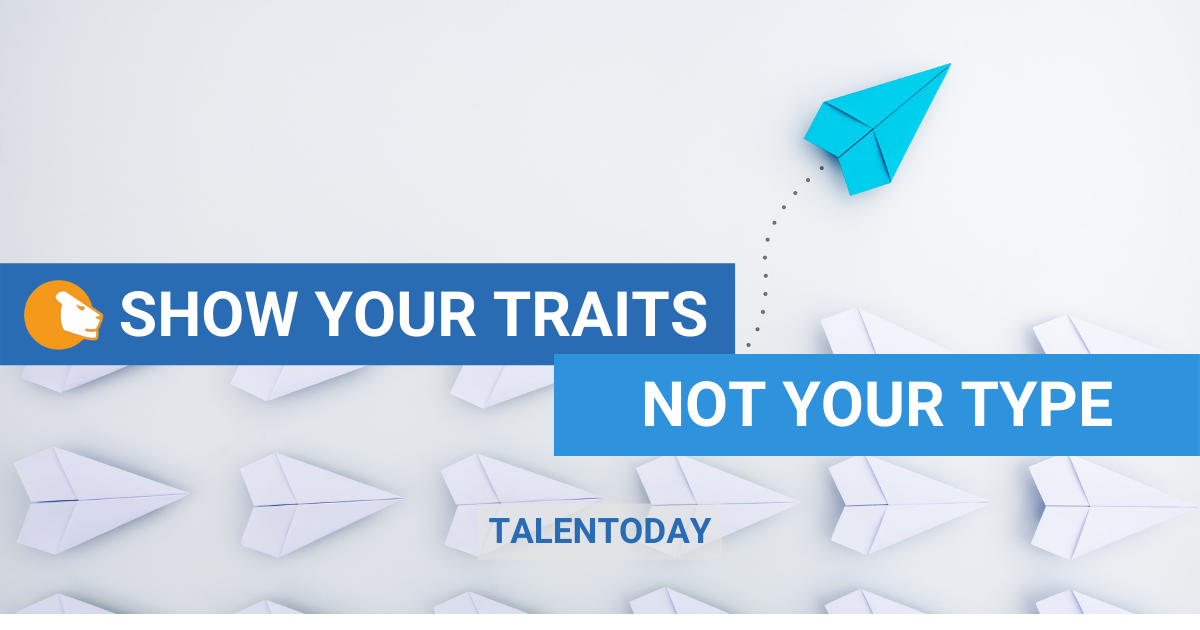
“What’s your type?” In the world of dating, this is the first thing people want to know. An easy answer, right? Intellectual, athletic, artistic — as humans, we typically begin with broad categories to describe ourselves and others. However, once you actually start describing what you’re looking for, you find yourself being more specific. “Likes to have philosophical conversations,” “enjoys outdoor activities in warm climates,” “likes to cook new recipes,” — in reality we are much more complex than those one word generalizations. The same philosophy should apply to soft skill assessments in the workplace. Instead of being bucketed into a generalized type, your traits are the best indicators of your unique strengths. Let’s break down the difference between types and traits.
Type Theory
Type theory is based around the idea that personality is a combination of qualities or dimensions that can be grouped together into a certain number of categories (or types). All people fall within one type based on which group they share the most specific attributes with. Think Myers Briggs or Enneagram, where you are one of 16 combinations of letters (ie, ESFJ) or one of 9 number types.
Yes, type theory is helpful for an organization to get a generalized idea of a person, but does that mean that a company really understands who you are, and more importantly, if you will be successful in the role? For example, if an assessment identifies you as an introvert, the assumption may be that that you are quiet, would prefer to work alone, and you need time to reflect on your thoughts before speaking. It’s a generalization, and while some of those assumptions may be true, chances are not all describe you.
The concern with using types in personality assessments is that humans are much more complex. Instead of Introversion and Extroversion being a dichotomy, it is better understood as a spectrum. That is where trait theory comes into play.
Trait theory
Rather than using broad categories to define human behaviors, trait theory focuses on the individual differences between people and eliminates the ‘boxes’ that type theory tries to fit people into. Going back to the introverted/extroverted example: trait theorists will say that a large majority of people actually fall somewhere in the middle and show qualities of both introverts and extroverts.
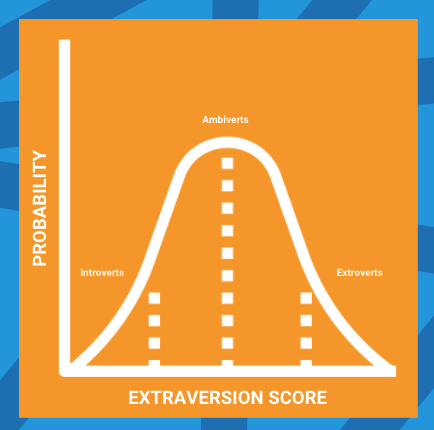
Research over the years has shown that there is enough of a variation in human personality for most of the scientific community to favor trait theory. Additionally, the most widely accepted theory of personality, the Big Five Theory, is part of trait theory. The Big Five is a theory in which five broad categories are the building blocks of personality, which most people have heard of using the acronym OCEAN: Openness, Conscientiousness, Extroversion, Agreeableness, and Neuroticism. Everyone falls on a spectrum in each of these categories, and sometimes these are broken down into smaller and more specific scales. This personality theory is the backbone of many of the personality assessments that are used today, like MyPrint® or the Big Five Inventory.
You are Unique!
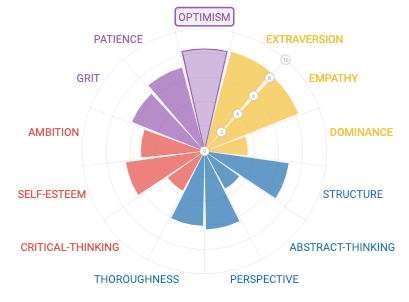
Now that you understand the differences between Types and Traits, which theory do you prefer when it comes to showcasing your soft skills? The one that generalizes you in a standard box, or the one that lets you expand outside those walls to showcase your unique qualities? If you want to discover more about your soft skill strengths, take a free MyPrint® assessment today! Once you have completed the questionnaire, you can begin using your traits to be more productive, improve your interpersonal skills, and set your personal and professional goals specific to your individual attributes. Additionally, you can see how your personality radar and motivation scales show the special qualities that make you YOU!
Looking for additional resources and support? Email Talentoday at customer@talentoday.com to learn more about our assessment and services!
Build Your Team Using Soft Skills
In the pandemic-impacted spring of 2020, puzzle sales were up 300% from the year prior¹. I have to admit that I contributed more than my share to that increase in sales; you can only watch so much Netflix before you need to find a new in-home activity!
What I’m trying to say is that I spent a lot of time in front of puzzles this year and I’ve learned one valuable lesson: teams are a lot like puzzles. That is our metaphor for today.
We don’t always know what our missing pieces will look like
When you are looking for the perfect piece for your puzzle you might have the exact picture of what you are looking for in your head. You know what the surrounding pieces look like (what their strengths are) and you just need to find the piece that looks like those ones. The problem with putting too many constraints on what we want is that oftentimes as human beings we’re wrong. Although there might be certain characteristics that we know we need for a position, that doesn’t mean that we know all of the important aspects.
When interviewing candidates, it might seem like we know exactly what soft skills are needed for success. After all, why wouldn’t you just find someone who looks just like your top performers? To start, there are a lot of positions where two opposing traits can come in handy! Someone who is extroverted can be just as successful in a position as someone who is introverted. Same goes for people who are patient versus being eager, or imaginative versus practical. That brings us to our next point — similarities and differences.
Some pieces look similar, but the differences in pieces are what create the whole picture
When every person on your team thinks exactly the same way, you lose something very important in teamwork: Diversity of Thought². When hearing this term you might automatically think of gender, race, background, or age. While all of these things are important, another aspect of diversity can come in when looking at — that’s right — soft skills.
When teams are collaborating on a project there are aspects of their personality or motivations that can be helpful to have similarities in. However, if you have a team full of extroverted people, you might find it hard to get on track. If your team is full of big picture thinkers, you might find yourself with a lot of ideas and not a lot of action items. If everyone on the team is very precise, you might end up spending more time on the details than necessary. Find the gaps in your team and keep that in mind when you are looking for new people to join your organization.
Each piece is unique and has a place, even if it’s not where you originally thought
Let’s say you hire an individual who you thought was the perfect fit for a team and they’re not doing quite as well as you thought. Before giving up on that person take some time to get to know their soft skills. What are their personality strengths? Are you utilizing these strengths in their position? Do these strengths have a place in their current position in the team? What motivates this person? Are you fulfilling those motivations as a manager or teammate, or is their work fulfilling those motivations?
See if there is another place where that individual can thrive, even if there are some skill gaps to address. People are the most important asset to an organization³ so before getting rid of a good hire, see if they were just in the wrong position.
Once your pieces are where they belong, you can create something amazing!
Every person is unique. Even when there are shared qualities within a team nobody thinks, is motivated, or behaves in the exact same way. Those differences are what make a team stronger, more creative, and ready to tackle whatever challenges they might face!
Using MyPrint® to put together your team
For more ways to understand your team’s soft skills on an individual and group level, check out our MyPrint® assessment and keep reading to learn more about some of our features included in the Talentoday Manager platform!
One Pager: Use this one page summary of an individual’s results to see their top 3 personality strengths, top 3 motivators, and 3 most prominent professional behaviors.
Premium Report: This 20+ page report gives in depth information about every personality and motivation dimension that is measured in the MyPrint® assessment, including strengths and tips to working with that individual. Additional information about the 11 professional behaviors are included, along with suggested interview questions to help you go more in depth when getting to know someone!
Collaboration Report: View two individuals’ most similar and different personality traits, as well as top motivators and behavior synergies in a side-by-side comparison.
Target Profiles: Use pre-made templates or create your own target profile to see where your team has similarities. From there you can determine if these traits are beneficial to the position, or use this tool to determine the soft skill gaps in your team!
Stay tuned for some new, exciting features in 2021! Get more insights on your team as a whole on all personality and motivation dimensions, as well as understanding how individuals’ behaviors synergize with one another.
Looking for additional resources and support? Email Talentoday at customer@talentoday.com to learn more about our assessment and services!
Sources
²https://www.businessinsider.com/the-future-of-workplace-diversity-is-here-2013-9
Introducing the MyPrint® Assessment
Think about your first cell phone. What features did it have? What technology has remained consistent, and what has evolved over time? Would you prefer to be using that same technology today?
Just as our cell phones change over time, other things in our lives evolve as we grow in our abilities and develop as a society. Among those is our soft-skills assessment here at Talentoday!
mYti© to MyPrint®
If you have been a member of our Talentoday community, then you’ve probably experienced the mYti© assessment, our original personality and motivations questionnaire. If you visit our website today, you will see the latest innovation in Talentoday’s science, MyPrint®, our brand new soft skills assessment. MyPrint® still measures personality and motivations but in an even more accurate way than before!
Theoretical Background
The theoretical background of the MyPrint® assessment is based on long-standing theories of personality and motivations within the psychology community. The personality dimensions are based on the Five-Factor Model of personality, which is considered the standard in personality trait measurement across cultures and has been proven reliable by more than 40 years of research¹. Our motivation dimensions are derived from Maslow’s Hierarchy of Needs² and the Self Determination Theory³, both of which left a strong legacy in the definition and measurement of motivational factors⁴.
Our Dimensions
Think back to our cell phone analogy. Your first phone probably had a lot of the same features that your phone has today (such as texting and calling capabilities) but they might look a little bit different; for example, now most cell phones have the ability to voice text or video call.
In the same way, the MyPrint® assessment has a lot of the same features as the mYti©. These features may look different, however. For example, we are still measuring personality and motivations and providing information about professional behaviors. Some of our scales have remained the same, such as Patience, and others are simply represented in a new way. For example, the Creativity scale is no longer a part of the personality radar, but it can still be found in our professional behaviors. With this change, we have been able to simplify our personality radar and motivation chart, without compromising member results.
Our Science
In addition to the scales and dimensions that we have updated, you might also notice that the questionnaire itself has changed. This is because we have updated the “behind the scenes” statistics and calculations for the assessment to use cutting edge technology, a lot like what happens when your phone receives a software update.
Just like the mYti© assessment, the MyPrint® uses “forced-choice” questions. This format provides two statements that are equally desirable, so it takes away what is called the Social Desirability Bias of trying to find the “right answer” to the questionnaire and gives the user the freedom to answer in the most truthful way possible.
The MyPrint® questionnaire takes the forced-choice question format one step further to not only have the user choose the statement that fits them the best, but to indicate to which extent that statement better suits them. This concept is called “multidimensional binary forced-choice with graded preferences” — one of the most recent and useful innovations in psychometrics⁵. More importantly, this is how Talentoday is able to achieve greater accuracy through developing our new MyPrint soft-skills assessment.
Experience the MyPrint®
The best part about a new phone is getting to try it out and see all of the new features! Now that you know more about our updated product, try it for yourself! Visit www.talentoday.com and take the MyPrint® assessment. If you want to learn more about our science click here and download the MyPrint® Technical Manual!
If you’re interested in your own one page report, premium report or in learning more information about Talentoday, please visit www.talentoday.com or contact our experts at contact@talentoday.com.
¹ Barrick, M. R., & Mount, M. K. (1991). The Big Five personality dimensions and job performance: A meta-analysis. Personnel Psychology, 44(1), 1–26.
² Maslow, A. H. (1943). A theory of human motivation. Psychological Review, 50(4), 370‐396.
³ Deci, E. L. & Ryan, R. M. (2000). Self-determination theory and the facilitation of intrinsic motivation, social development, and well-being. American Psychologist, 55, 68–78.
⁴ Costa, P. T., & McCrae, R. R. (1985). The NEO Personality Inventory manual. Odessa, FL: Psychological Assessment Resources.
⁵ Brown, A., & Maydeu-Olivares, A. (2017): Ordinal Factor Analysis of Graded-Preference Questionnaire Data. Structural Equation Modeling: A Multidisciplinary Journal, 25(4), 516–529.
What’s your management style? Infographic with women vs. men comparison
One day we may all be promoted to a management position. Experience and career advancement push us towards positions with more responsibilities, so what kind of managers will we be? Depending on our personalities, we will adopt different types of attitudes and behaviors.
A leader’s personality varies widely. In fact, there are as many different ways to manage people as there are people on earth. Management style is the result of the manager’s environment as well as his or her true character. In order to be most effective, the style must be adapted to each situation*. Adopting the same behavior for each situation could be a real problem for people leading teams and projects.
Paul Hersey and Kenneth Blanchard proposed a typology of 4 main management styles. To understand the different types, we need to take various factors into account, such as the natural tendency to lead of the people, or the manager’s ability to open up to other people’s ideas.
Let’s take a look at the four types introduced by Hersey and Blanchard, and how they can exist in the workplace:
- Autocratic Management: The manager makes decisions within the team, acting as an example for others. Especially in times of stress, employees may enjoy working with an autocratic leader. They may enjoy being told exactly what to do and having someone step up, take initiative, and take control of the situation. This management style can be especially effective when decisions are needed on an urgent basis, but can be somewhat stressful for some employees when the added pressure plays against them, hindering their performance and the overall atmosphere in the workplace.
- Paternalistic Management: The manager devotes time to pedagogy, taking the time to explain decisions and coach the team. In this style of management, the relationship between leaders and their employees is similar to the relationship between the head of a family and the members of the family. The manager in this sense is guiding and protecting his employees as if they are members of his own family. This approach can be difficult when used with senior professionals, who may not like their own interests looked after so attentively. Instead of gratitude, it may bring about resentment among senior-level employees, so may be a more successful style for use with entry-level employees who are in need of a more hands-on approach. The relationships between these coworkers and their leader are extremely solid.
Democratic Management: The manager encourages the participation of the team and includes their point of view in the final decision. This style is a very open way of organizing a team. Ideas are encouraged, and are openly discussed within the group. Everyone is encouraged to share their point of view. With situations of frequent change, this form of management allows for a great deal of flexibility in order to adapt and improve. Democratic management may bring out the best in a highly-experienced team, capitalizing on their skills, talents and experience, allowing them to share their views, rather than expecting employees to conform to one idea. This style may be inefficient in times of emergency or rush, as the decision-making process is longer. - Delegative Management: The manager leaves decisions up to the team, empowering others to develop and grow their ideas. This style is also known as laissez-faire or hands-off, as it empowers employees to strengthen their own management and personal leadership skills during the process. The leader assigns tasks to employees, while providing adequate support and resources to complete them, and the employees are responsible for each of their own projects. While the manager is still held responsible for the final product, this style expresses trust in employees, and allows the manager to be available to employees for feedback and growth. When the team needs too much reassurance or encouragement, the style might not be adapted, especially during stressful situations or with entry-level employees.
So, what’s your management style?
With data collected through Talentoday’s analytical tools, we developed the following infographic illustrating the preferred management styles of men and women around the world.
*The Situational Leadership Theory, Paul Hersey and Kenneth Blanchard (1967)
Learn more about Talentoday and take the scientifically designed assessment:www.talentoday.com
3 things you must do before hiring candidates
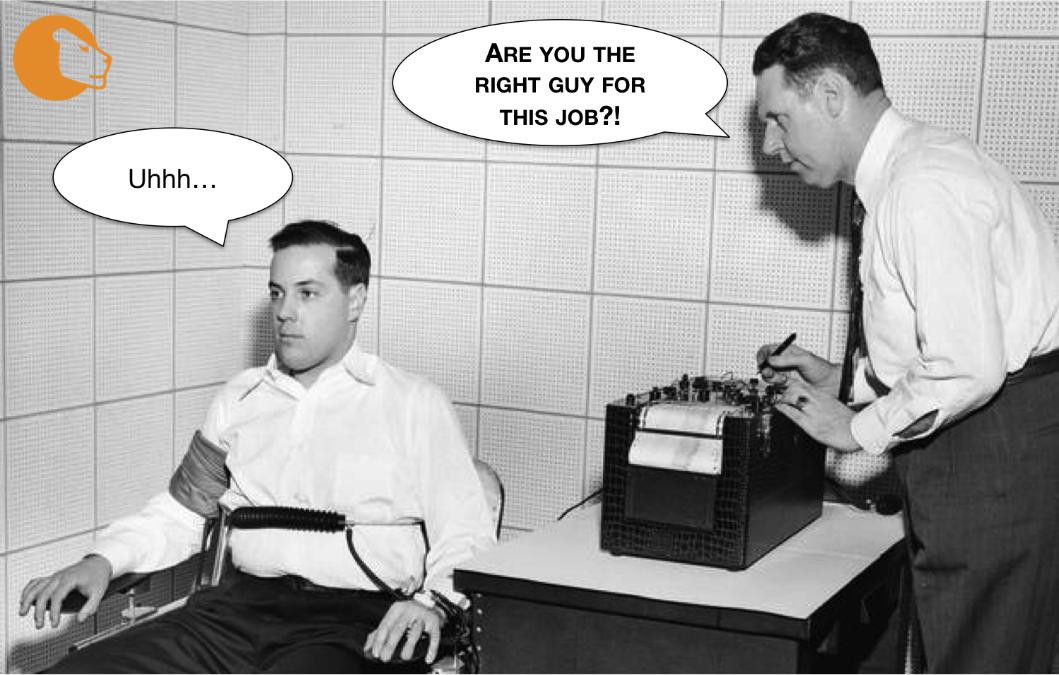
Every manager, HR professional and recruiter faces the same question: Am I recruiting the right candidate for this position? It became essential to be able to discover and acknowledge the value of your future employees and the way they will match to the job position in our fast-paced and technology driven world. Performance is directly correlated to the fit between your candidate’s skills, personality and motivation but also to your company culture, requirements for the job, team members already in place, etc.
Here are the 3 things you need to do:
1 — Evaluate their skills
You want to explore the knowledge and cognizance of every individual, or what the person knows how to do. The skills and aptitudes of a person are usually identified in resumes, diplomas, and experiences. These can also be distinguished via aptitude tests, performance tests, real-life simulations or exercises. Before the meeting, it’s essential to take note of the exact tasks, responsibilities and tools the future employee will have to do, use or learn.
2 — Explore their personalities
This point is crucial and it is the center of the assessment process, in meetings between a recruiter and a candidate. It is not groundbreaking to acknowledge that there is a strong correlation between personality fit and performance in a career. Personality is a complex concept that can be explored in many complementary ways.
We can evaluate it by using personality tests, and with previous employers recommendations, 360-degree feedback or in a well-conducted face-to-face semi-directive interview. The main advantage of using personality tests for interviews (when they are serious!) is that they allow for the standardization and normalization of assessments between different people. Nowadays most are online, easy-to-use and inexpensive. In a way, they allow you to know your candidates before you meet them.
3 — Understand their motivations
Motivation is the third fundamental element to consider while assessing individuals you wish to recruit. It is so important to be aware of people’s aspirations, to know what they seek in their professional lives, and what motivates them. Candidates must select the organization that interests them, identify the people for whom and with which they work, and enjoy the possibilities offered. Every career opportunity must also fit the career plan of the applicant. For example, you can hire the best talent to work for Salesforce.com, but if he is not motivated by the tasks, he will not perform his best, and will leave the company earlier than expected.
If you wish to hire applicants who fit the open position and company culture, make sure you take these points into consideration. While you are free to select a candidate, applicants also choose the company and the people they will work for, their preferred position, and the working framework that matches their expectations.
Adopt the best practices for recruitment and download our free 20 page guide on assessing and selecting talents.
Feel Prepared Your Senior Year
It’s your senior year and you’re really not looking forward to going back to school. We know about having “senioritis.” We really understand it too! For this reason, we want to help with your transition from senior year to a new school. The Talentoday Team has come up with three tips to help you have a positive outlook towards filing applications to different colleges, looking for housing, and meeting new friends or classmates for the coming year.
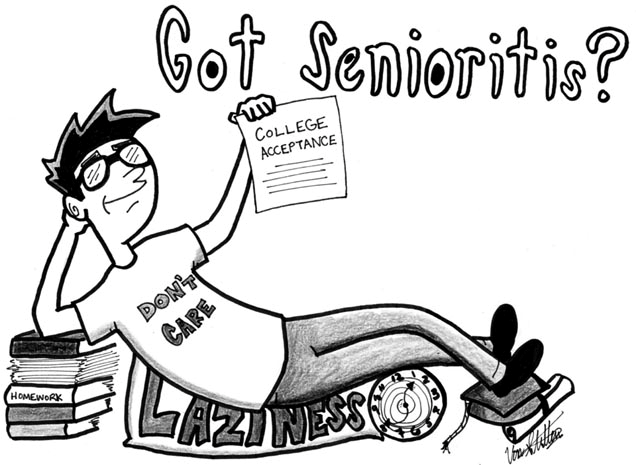
Tip #1: Applying to colleges
Take a look at your strong points on your personality and motivations radar. Are you someone who is at ease in public? Or do you tend to be an independent and autonomous person? Research schools and programs where your personality and motivations will be satisfied and fulfilled. This way you’ll feel more confident applying to the programs at different schools. You shouldn’t have to drastically tailor yourself to programs; you should feel like you belong where you apply!
Tip #2: Looking for housing
For many of us, tuition fees are extremely high and cannot afford to live on our own. Because of this, we have to look for roommates. Compare your personality and motivations radar with potential roommates via your Talentoday profiles. Do you prefer to have an organized roommate? Or do you want to be roommates with someone who has similar motivations as you? Want to get to know your potential roommate at a more personal level? These types of questions can be answered by simply connecting and sharing profiles. You might just save yourself from a stressful quarter or semester with a roommate you do not get along with.
Tip #3: A-team for group projects
Attending a new school means you’ll meet new people. You may meet some who are studying the same thing as you or are part of other programs that your school offers. Either way, if you are assigned a group project, you will be interested in who you can count on for the completion of these. Who will be the leader, or the event organizer? Who can keep up with stressful situations and meet deadlines? By sharing your personality and motivations results with friends and classmates, you will be able to distinguish each person’s character and might be able to form a grade A-team.
Your personality and motivations radars reveal the real you. After you recognize your talents and motivations, you will feel more confident applying to the programs at different schools, as well as seek roommates and group mates that complement your qualities. So, put senioritis off to the side and take control over your skills and incentives. Invite your friends and classmates to take the Talentoday questionnaire, and compare your results with everyone to identify those whom you can successfully work with in the personal, academic and professional world.



